Faulting and Fracturing on Jupiter's Moon, Europa
Planetary Geology and Fracture Mechanics
Tidal stresses from Jupiter result in a highly fractured surface on Europa that is a structural geology puzzle just asking to be unraveled. Some of the most interesting features on Europa are long arcuate shaped features called cycloids or flexi. These features appear to be unique to Europa, but because all fractures follow physical laws, cycloid formation can be understood with careful observations combined with the principles of fracture mechanics.
Along with Simon Kattenhorn, we made the first detailed geometric and morphologic descriptions of Europan cycloids. Cycloids exhibit a wide range of morphologies. We argued that these enigmatic arcuate cracks arise due to the rotating diurnal tidal stress field and form kinks (cusps) due to small amounts of shearing during the tidal cycles. We also studied strike-slip faults on Europa and found similar kinks at the ends of many strike-slip faults. I am currently interested using the data that we have collected to create mechanical models of faults and cracks on the surface of Europa.
The images below show some of our results...
Early Observations of Cycloids
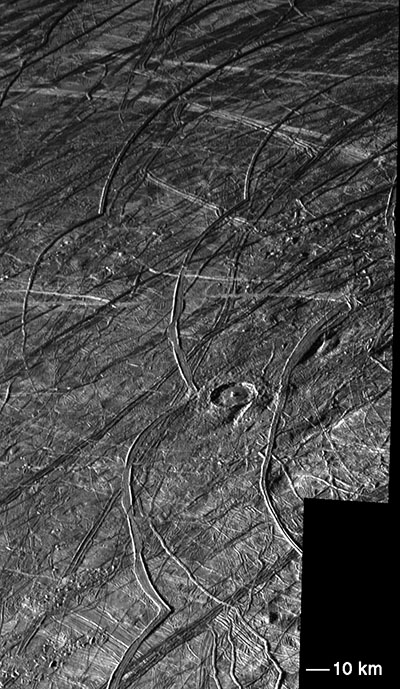
Above: Numerous cycloids in Europa's northern hemisphere as imaged by the Voyager spacecraft during the 1970's. Image modified from Hoppa et al. (1999).
Regional-Scale Mapping of Cycloids
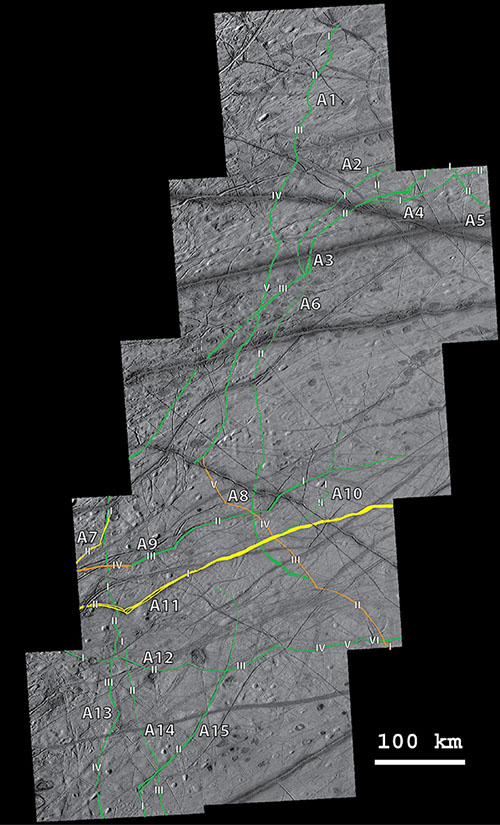
Above: High resolution mosaic images show the locations and abundance of cycloids on Europa. Modified from Marshall & Kattenhorn 2005.
Morphology of Cycloids
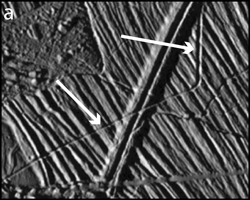


Above: High resolution images (please pardon the lack of a scale) of cycloids of differing surface morphology taken by the Galileo spacecraft. The above images highlight the three most common morphologies of cycloids on Europa (a) trough (b) ridge (c) band. Modified from Marshall & Kattenhorn 2005.
Secondary Fracturing Around Strike-Slip Faults
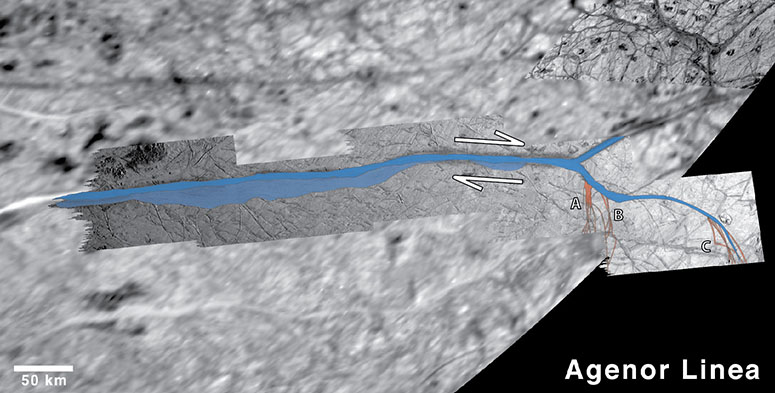
Above: Galileo mosaic of the large right-lateral strike-slip fault, Agenor Linea (highlighted in blue). Note the numerous secondary fractures (highlighted in red). For more examples of strike-slip faulting and associated secondary fracturing on Europa refer to Kattenhorn & Marshall (2006).
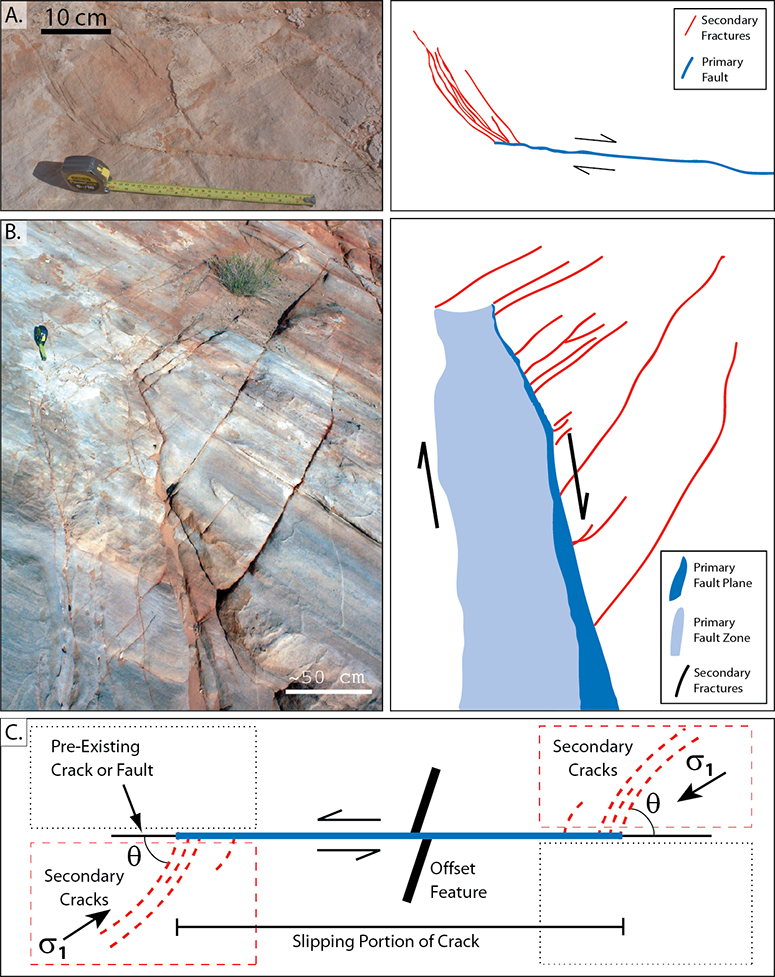
Above: Examples of secondary fracturing around strike-slip faults on Earth. Such behavior is well-documented on Earth, and since faults all follow the same physical laws regardless of what planetary body they are on, we expect similar behavior along fault on Europa. For more examples of terrestrial strike-slip faulting and associated secondary fracturing on Earth refer to my southeast Nevada faulting research page.
Growth Mechanics of Cycloids
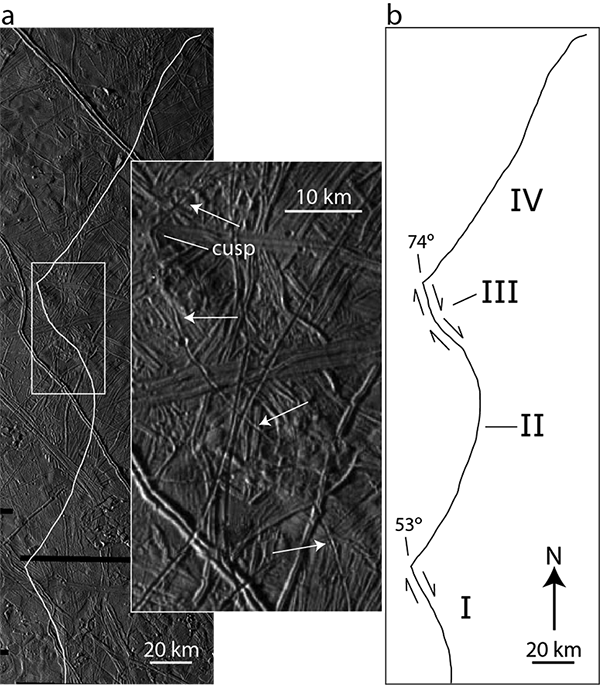
Above: Schematic sketch of the growth mechanics of a cycloid from Marshall & Kattenhorn (2005). Note that the reversal in curvature of the second segment above cannot be explained by the previous model of cycloid formation.
